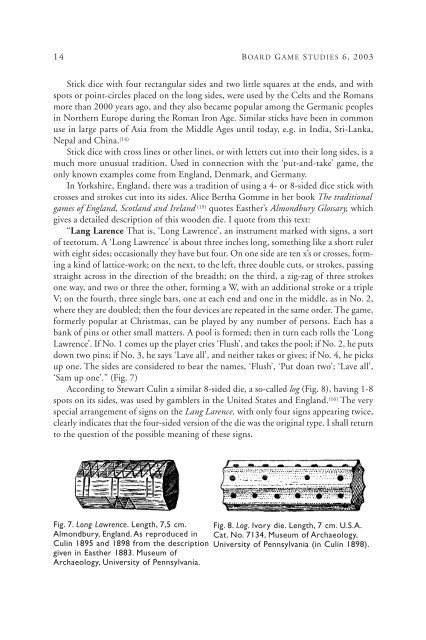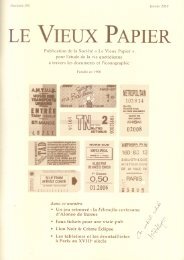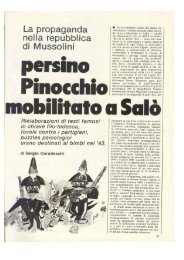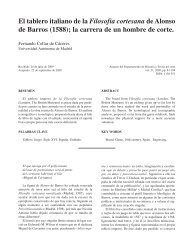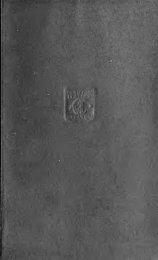Board games from the city of Vijayanagara (Hampi ... - Gioco dell'Oca.
Board games from the city of Vijayanagara (Hampi ... - Gioco dell'Oca.
Board games from the city of Vijayanagara (Hampi ... - Gioco dell'Oca.
Create successful ePaper yourself
Turn your PDF publications into a flip-book with our unique Google optimized e-Paper software.
14<br />
B OARD G AME S TUDIES 6, 2003<br />
Stick dice with four rectangular sides and two little squares at <strong>the</strong> ends, and with<br />
spots or point-circles placed on <strong>the</strong> long sides, were used by <strong>the</strong> Celts and <strong>the</strong> Romans<br />
more than 2000 years ago, and <strong>the</strong>y also became popular among <strong>the</strong> Germanic peoples<br />
in Nor<strong>the</strong>rn Europe during <strong>the</strong> Roman Iron Age. Similar sticks have been in common<br />
use in large parts <strong>of</strong> Asia <strong>from</strong> <strong>the</strong> Middle Ages until today, e.g. in India, Sri-Lanka,<br />
Nepal and China. (14)<br />
Stick dice with cross lines or o<strong>the</strong>r lines, or with letters cut into <strong>the</strong>ir long sides, is a<br />
much more unusual tradition. Used in connection with <strong>the</strong> ‘put-and-take’ game, <strong>the</strong><br />
only known examples come <strong>from</strong> England, Denmark, and Germany.<br />
In Yorkshire, England, <strong>the</strong>re was a tradition <strong>of</strong> using a 4- or 8-sided dice stick with<br />
crosses and strokes cut into its sides. Alice Bertha Gomme in her book The traditional<br />
<strong>games</strong> <strong>of</strong> England, Scotland and Ireland (15) quotes Eas<strong>the</strong>r’s Almondbury Glossary, which<br />
gives a detailed description <strong>of</strong> this wooden die. I quote <strong>from</strong> this text:<br />
“Lang Larence That is, ‘Long Lawrence’, an instrument marked with signs, a sort<br />
<strong>of</strong> teetotum. A ‘Long Lawrence’ is about three inches long, something like a short ruler<br />
with eight sides; occasionally <strong>the</strong>y have but four. On one side are ten x’s or crosses, forming<br />
a kind <strong>of</strong> lattice-work; on <strong>the</strong> next, to <strong>the</strong> left, three double cuts, or strokes, passing<br />
straight across in <strong>the</strong> direction <strong>of</strong> <strong>the</strong> breadth; on <strong>the</strong> third, a zig-zag <strong>of</strong> three strokes<br />
one way, and two or three <strong>the</strong> o<strong>the</strong>r, forming a W, with an additional stroke or a triple<br />
V; on <strong>the</strong> fourth, three single bars, one at each end and one in <strong>the</strong> middle, as in No. 2,<br />
where <strong>the</strong>y are doubled; <strong>the</strong>n <strong>the</strong> four devices are repeated in <strong>the</strong> same order. The game,<br />
formerly popular at Christmas, can be played by any number <strong>of</strong> persons. Each has a<br />
bank <strong>of</strong> pins or o<strong>the</strong>r small matters. A pool is formed; <strong>the</strong>n in turn each rolls <strong>the</strong> ‘Long<br />
Lawrence’. If No. 1 comes up <strong>the</strong> player cries ‘Flush’, and takes <strong>the</strong> pool; if No. 2, he puts<br />
down two pins; if No. 3, he says ‘Lave all’, and nei<strong>the</strong>r takes or gives; if No. 4, he picks<br />
up one. The sides are considered to bear <strong>the</strong> names, ‘Flush’, ‘Put doan two’; ‘Lave all’,<br />
‘Sam up one’.” (Fig. 7)<br />
According to Stewart Culin a similar 8-sided die, a so-called log (Fig. 8), having 1-8<br />
spots on its sides, was used by gamblers in <strong>the</strong> United States and England. (16) The very<br />
special arrangement <strong>of</strong> signs on <strong>the</strong> Lang Larence, with only four signs appearing twice,<br />
clearly indicates that <strong>the</strong> four-sided version <strong>of</strong> <strong>the</strong> die was <strong>the</strong> original type. I shall return<br />
to <strong>the</strong> question <strong>of</strong> <strong>the</strong> possible meaning <strong>of</strong> <strong>the</strong>se signs.<br />
Fig. 7. Long Lawrence. Length, 7,5 cm.<br />
Almondbury, England. As reproduced in<br />
Culin 1895 and 1898 <strong>from</strong> <strong>the</strong> description<br />
given in Eas<strong>the</strong>r 1883. Museum <strong>of</strong><br />
Archaeology, University <strong>of</strong> Pennsylvania.<br />
Fig. 8. Log. Ivory die. Length, 7 cm. U.S.A.<br />
Cat. No. 7134, Museum <strong>of</strong> Archaeology,<br />
University <strong>of</strong> Pennsylvania (in Culin 1898).


